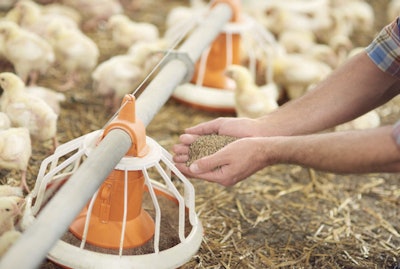
The tools used to evaluate animal welfare have evolved since interest in it first emerged and new, animal-based measures offer broiler producers a more rigorous approach based on monitoring bird behavior.
While more work still needs to be done to assess the validity of the newer, animal-based measures, they, nevertheless, allow broiler producers to address this growing concern.
Methods to measure broiler welfare
Originally, resource-based measures were developed to evaluate the presence of correct conditions, such as sufficient water or ventilation units to ensure good welfare. Resource-based measures, however, are being replaced by animal-based measures, which directly observe animal activity.
The majority of the measures recommended by, for example, the Welfare Quality Project, which has developed standardized ways of assessing welfare and a standardized way of integrating this information, are now animal-based.
Optimizing welfare
The Welfare Quality Assessment Protocol, developed by the Welfare Quality Project, highlights four welfare principles, with 12 welfare sub-criteria.
Welfare is evaluated by observing birds in broiler houses and by reviewing production and slaughter records. Assessments can help identify areas requiring more attention within an operation.
To optimize broiler welfare, producers should evaluate these parameters within each of the welfare principles.
Good feeding
Good feeding criteria are the absence of prolonged hunger and thirst.
- Broilers should have easy access to adequate amounts of good quality, clean feed and water. Observe broilers daily to confirm all birds can access feeders and drinkers.
Good housing
Housing criteria are comfort around resting, thermal comfort and ease of movement.
- Comfort around resting: Monitor feather condition, since dirty plumage can indicate suboptimal conditions, including high litter moisture. Wet litter contains more than 25% moisture. When a handful of litter stays clumped after being squeezed, it is too wet. Inversely, too dry conditions can also be detrimental. Control the amount of dust in a broiler house.
- Broilers require thermal-neutral facilities. Monitor broilers for panting or huddling. Adjust the rate of ventilation, drinking water and other variables until the relative air humidity does not exceed 80% within the house.
- For ease of movement, monitor stocking density. Since birds do like to bunch together, a bird’s preferred state will seem crowded to a lay person. However, too high a stocking density will impact both welfare and economic return. Recommended maximum stocking densities range from 30 kg/m² to 42.5 kg/m². Adjust stocking density for optimal conditions while staying within regional guidelines.
Good health
Good health criteria include absence of injury and absence of disease.
- Absence of injury – lameness, hock burns, foot pad dermatitis and breast lesions are indicative of suboptimal conditions and improper handling. Injuries may also result from genetic traits of heavier birds or weak legs. Producers should consider the capabilities of their production system when selecting broiler strains.
- Absence of disease – Monitor the overall health of broilers, as well as mortality and culls. Suboptimal conditions increase stress, which can then influence disease.
Appropriate Behavior
Of all the welfare principles, appropriate behavior is the hardest to measure. Even so, a producer can still observe how birds interact with humans, and whether increased cannibalism or aggressive pecking are occurring. Review available qualitative behavior assessments for additional observations.
Welfare evaluations
Producers need to maintain a fine balance between optimizing production parameters and factors critical to bird welfare. While good management practices optimize many welfare issues, factors such as genetics must also be considered. 
Beyond Good Management
When production gains coincide with improving animal welfare, no additional mechanisms to protect animal welfare are needed. However, when increasing production conflicts with good welfare, other mechanisms may be enacted to ensure animals are not suffering. These mechanisms include:
- Legislation: Poultry welfare laws vary greatly, with no generally recognized worldwide standards. Increased legislation often follows increased public awareness of animal welfare issues.
- Codes of practice: Non-binding codes of practice can be particularly useful when they clearly establish minimum standards for farmers to follow, as well as alternatives to further optimize welfare.
- Self-imposed codes/assurance schemes: In many countries, voluntary schemes certify that broilers are kept at specified welfare standards. These self-imposed codes are often established by important retailers or food chains to represent higher prices premium labels, and therefore also reimburse producers for welfare-related costs.
While all welfare controls serve purposes, none are all-inclusive. For example, legislation alone does not automatically guarantee better broiler welfare. A 2015 study used the Welfare Quality protocol to compare the welfare of Belgium broiler flocks (stringent welfare legislation) to the welfare of Brazilian broiler flocks (minimal welfare legislation). Although all farms received acceptable rankings, Brazilian farms obtained higher scores in three of the four welfare principles.

















